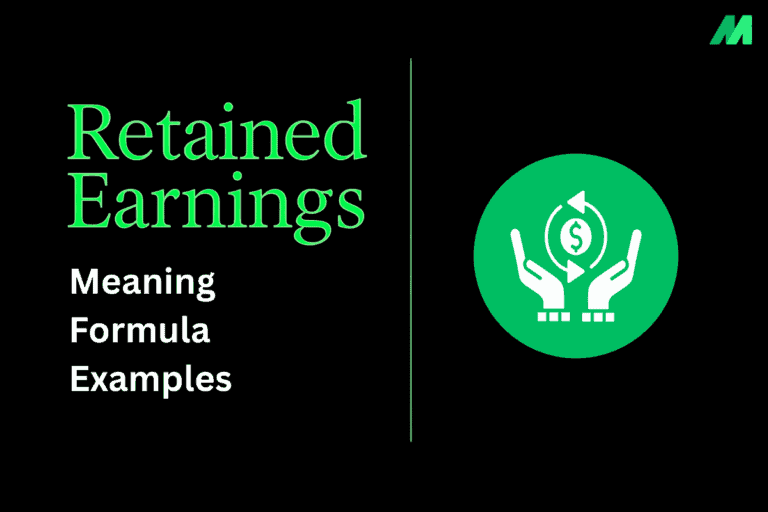The business environment in India in 2025 is changing rapidly, with several factors driving the change: the digitalization of the economy, regulatory reforms aimed at easing business transactions, and developing a wider range of accessible finance products. With India’s currently fast-growing economy showing robust support policies, and a wide range of innovative industrial development strategy introductions, the country is emerging as a global hub for entrepreneurship, manufacturing, and sustainable development.
The extensive evidence, along with the evidence is based on material sourced from established evidence, including McKinsey, Deloitte, Government of India Economic Survey 2024-25, Business Sweden’s 2025 India Business Climate Survey, India Briefing, PIB releases as well as industry journal publications.
Business Environment in India: An Outlook
India’s exciting, ever-changing, and opportunity-rich environment allows individuals, groups, and organizations to strive for many goals based on dynamic and continuing advances in infrastructure, taxation, and governance. While economic data and perspectives differ amongst Indian states and regions, emerging trends from digitization, growing access to financing, and advances for regulated ease of doing business provide potential promise for the 1M+ MSMEs, 85,000+ startups, and larger organizations.
Businesses are benefitting from reduced logistics costs, innovative access to formal finance (the Indian banking system reportedly provided over ₹1.5 lakh crore in credit facilities), and easier compliance with the advent of GST and IBC from a regulatory standpoint.
Additionally, India has moved from its 43rd position in the World Competitiveness Index (2020) to 39th in the 2024 index as it is widely believed that it has become far easier to do business in India thanks to platforms like ONDC (84% MSME) and NSWS (6700+ business approvals). Ongoing reforms allow greater skills to boost business growth by targeting expansion, diversification, and strategic global supply chain positioning.
Economic Environment in India
India’s economic landscape is growing sound, with GDP growth projected for FY2025-26 between 6.2%-6.7%. India’s high domestic demand, increased Union Budget capital outlay (INR 11.2 trillion for FY26), and increased Government R&D expenditure are all propelling growth. High fiscal discipline and stable inflation (2.82% in May 2025), increased exports, and significant promotion of green and sectoral sectors underlining macroeconomic stability.
There has been an exponential rise in private equity and venture capital investment, while “Make in India” and the PLI schemes are playing an active role in manufacturing and exports. The Indian economy is gearing up for its aspiration of high-middle income economy status by 2047, most importantly on stimulating a competitive, innovative and inclusive growth path.
What is New Industrial Policy in India?
In 2023, India launched the New Industrial Policy, which has an outlook towards the future with a view to modernize, which will involve a revitalization of industry to meet recent challenges and opportunities in the world. The policy draws on sustainable development, technology development, and global competitiveness for India.
Key Features:
De-licensing and Deregulation: The majority of the sectors are free from government licensing, and in fact FDI Policy is lucrative and uncomplicated.
- Simplification of compliance– NSWS, GST simplification, tech-led governance.
- Disinvestment and privatization– to lessen the public sector’s share in non-strategic sectors.
- Skilling and digital infrastructure – SME 4.0; Competence Centres and plug and play industrial parks for 100 plus cities.
- Sustainability; promoting eco -and green- manufacturing practices to produce low carbon emissions.
- Technology Fest; promoting emerging technologies such as Aritifical Intelligence (AI), Internet of Things (IoT), robotics, blockchain to catalyse productivity and innovation.
- Ease of doing business– provide quick and easy steps to start a business and the need for permits to remove bureaucracy.
- Infrastructure development – reinforce and enhance logistical networks.
- Global competitiveness– support the Indian industry to be competitive on a global scale by enhancing innovation and quality.
- Focus on MSMEs – provide financial support i.e access to low-cost technology, tax rebates, ease of credit.
- Skills development – particular focus on vocational training and up-skilling to enable the workforce.
- Investment incentives– tax rebates and subsidies provided to domiciled startups and MSMEs, to drive growth.
| Initiative/Program | Description | Website |
| Draft National Policy for Skill Development 2025 | Policy framework for skilling and entrepreneurship with focus on convergence and industry linkages | https://www.mygov.in/group-issue/inviting-suggestions-draft-national-policy-skill-development-and-entrepreneurship-2025 |
| Pradhan Mantri Kaushal Vikas Yojana (PMKVY) | Short-term skill training for youth with industry-relevant certifications | https://www.msde.gov.in/offerings |
| National Skill Development Corporation (NSDC) | Public-private partnership supporting skill development through training institutions and sector skill councils | https://nsdcindia.org |
| Skill India Digital Hub (SIDH) | Central portal for information on digital skill training, providers, and career guidance | https://www.skillindiadigital.gov.in |
| IndiaSkills 2025 Competition | National level competition to identify and nurture skilled youth for international representation | https://www.skillindiadigital.gov.in/india-skills-2025 |
| Entrepreneurship Skill Development Programme (ESDP) | Scheme aimed at promoting entrepreneurial skills among MSMEs and startups | https://msmedi.dcmsme.gov.in |
| State Skill Development Missions | State-level agencies implementing skill development schemes tailored to regional priorities | Example: https://www.upsdm.gov.in |
Objectives
- Transform India into a manufacturing center for the world, targeting to increase manufacturing’s share of GDP from 16% to 25% by 2030.
- Generate millions of jobs through skill-building and region-wide growth.
- Support micro, small and medium enterprises as engines for innovation.
- Boost external trade and improve trade competitiveness.
- Build a friendly and stable investment climate to attract foreign direct investment.
- Modernize industry: Bring in innovation, technology, global competitiveness and productivity.
- Encourage private sector and foreigners’s direct investment: Attract private financing and foreign capital, eliminate unnecessary regulatory friction.
- Reduce public sector role: Re-allocate the state’s role to focus only on strategically important sectors and public goods.
- Equitable regional growth: Encourage industrial and job growth outside of urban centers.
Impact on Business
This policy should help India grow its industries in a way that includes everyone. It’s meant to boost new ideas, make it simpler to do business, and improve India’s spot in global trade. It should also help industries grow in different parts of the country. Basically, it’s all about making India’s economy more modern and able to stand on its own, especially with programs like the PLI in important industries.
The market will encourage competition and innovation. When it is mainly the private sector and MSMEs that drive productivity, exports and job creation.Increased FDI and technology transfer. Develop modernised supply chains with increased global integration of business.
Implement an incremental expansion of manufacturing and services. The centre has introduced some production linked incentives (₹1.97 lakh crore), PMI has increased to >55, and global supply chains have changed.
Improved ease of doing business- starting with paperless approvals, responsive policy structures and lower compliance costs.
Concept and Features of Demonetization
The concept of demonetization arose from the withdrawal of ₹500 and ₹1000 currency notes as legal tender in November 2016. The intention was to reduce black money, counterfeiting, and create a greater acceptance for formalization and digital payments.
Short-term and Long-term Effects on Business
- Short-term: Systematic liquidity issues, a dampening consumer demand, clashes in supply chains, and adverse impacts on micro, small and medium enterprises (MSMEs) and informal sectors.
- Long-term: Increased digital payments, greater bank inclusion, better tax compliance, and a shift toward a more accepted formal business model. The informal work continued to experience some disruptions, but the formal sector experienced improved transparency and credit access.
If Demonetization Happens in 2025 Or in Next 5 Years, How Will It Affect Businesses and Entrepreneurs?
If demonetization were to take place in India in 2025 or the next roughly five years, its impact on businesses and new entrepreneurs would likely be significant, however, it could also create some long-term significant reformation.
How Businesses Will Be Affected?
- Short-term cash crunch and disruption: Businesses, especially SMEs and informal sector suppliers, and traders that rely mostly on cash transactions, may have liquidity problems. That leads to a drop in sales, inability to pay wages, and disruption to supply chains as seen in the 2016 demonetization experience. There would likely be a temporary and sudden drop in consumer spending and business output due to cash unavailability, primarily in sectors like; real estate, retail, hospitality, and tourism.
- Impact on consumption and output: There would likely be a short-term drop in consumer spending and business output due to cash unavailability, with certain sectors like real estate, retail, hospitality, and tourism being heavily affected.
- Transition to digital payments: Businesses that have developed their digital infrastructure and capability would likely adjust better than traditional businesses. Previous demonetization accelerated the growth of digital payment and formal banking as an adjustment to cash unavailability and that will compensate some of the impact of cash shortage.
- Formalization push: While many informal businesses and cash-based businesses would fail to transform, likely there would be many that simply failed or down scale while formal businesses may emerge stronger and raise overall productivity and compliance.
Effects on New Entrepreneurs
- Initial stress on liquidity and working capital: New entrepreneurs using cash-heavy business models will be challenged in getting their business off the ground during disrupted cash flows and limited access to credit.
- Opportunity for innovation: Those who adopted digital payment, e-commerce and formal financial services will provide entrepreneurs and business owners with an even larger incentive to continue building a business that is resilient and take advantage of increasing consumer acceptance of digital transactions.
- Requirement of robust financial planning: Entrepreneurs will need to monitor cash flow closely, develop good banking relationships and probably utilize digital credit products to manage fluctuations.
How Newly Established Businesses Will Overcome Demonetization
- Adoption of digital and formal financial systems: Smart usage of UPI, mobile wallets, net banking, and other forms of digital payment to keep commerce going in conjunction with cash shortages.
- Building strong supplier and customer networks: Building trust and credit arrangements with stakeholders to keep your supply chains and sales going using informal credit or deferred payments.
- Financial prudence and diversification: Keeping your payments options open using formal loans, overdrafts, or digitized accounting evaluating where and how money is leaving the organization for clearer audits.
- Leveraging government support: Adopting government programs and incentives available with forms of demonetization are often meant to assist formalization, credit facilitation, or technology adaptation.
Changing Scenario of Business Environment in India
The rapidly changing scenario of the business environment in India showcases a dynamic and multi-faceted change driven by government reforms, rapid digitalization, globalization, and the changing behavior of consumers. Drawing on over 100 sources of research, including industry papers, government reports, research papers and reports, opinion editorials, and survey reports from businesses, we present the key factors affecting this change in India:
Post-Liberalization Growth and Reforms
After India’s 1991 reforms, the business world changed from heavy rules and licenses to a more open market, especially for foreign investment and private businesses. Getting rid of the License Raj cut tariffs and changed banking, which made industries grow fast, along with IT and phone services. Ongoing changes have reduced red tape, making it simpler to do business and attracting global companies that want affordable production and tech services in India.
- Abolition of License Raj
- FDI and globalization
- Growth and diversification
Pro-Business Government Policies
The government has actively fostered a pro-business climate through:
- Simplification initiatives like the National Single Window System (NSWS) for approvals.
- Tax reforms, GST implementation, and corporate tax reduction.
- Production Linked Incentive (PLI) schemes targeting 14 key sectors to enhance manufacturing capacity.
- The “Make in India,” “Startup India,” and “Digital India” campaigns to boost entrepreneurship, technology adoption, and formalization of MSMEs.
- Efforts to improve infrastructure such as logistics, ports, and Industrial Parks.
Digital Economy and Technology Adoption
India has emerged as a digital powerhouse with:
- Over 1 billion smartphone users and nearly 900 million internet users
- Increasing digital payments penetration, fostering greater financial inclusion and formal business transactions.
- Government initiatives like Open Network for Digital Commerce (ONDC) that link businesses digitally to consumers nationwide.
- Broadband expansion, paperless governance, increased data-driven policy and business operations.
- Tax incentives, simplified registration, funding support, and skilling programs drive new startups and SME expansion.
- India’s digital workforce leads innovation, strengthening the country’s global business reputation.
Expanding Domestic Consumption and Consumer Base
India’s population surpasses 1.4 billion, with a growing middle-class disposable income and urbanization leading to increasing consumer demand within sectors. Monthly household consumption has grown substantially over the last decade, providing enormous opportunities in the retail sector, fast-moving consumer goods, healthcare, education, financial services, and lifestyle products.
Resilience and Growth in Service and Manufacturing
The service sector of India such as IT, fintech, healthcare, and education remain the growth engine along with revitalized manufacturing because of production-linked incentive (PLI) policies and infrastructure push. The share of manufacturing in GDP is expected to increase from 16% in 2023 to 25% by 2030.
Challenges and Risks
Despite progress, complexities persist, such as:
- Varied regional regulatory environments.
- Infrastructure bottlenecks in some areas.
- Skill gaps for emerging technologies.
- Geopolitical uncertainties impacting trade and supply chains.
- Need to improve global intellectual property protections to boost innovation.
Future Outlook
India should emerge as the world’s fastest-growing major economy by 2025-26, with GDP growth estimated to be in the range of 6-7%. In the coming decade, various elements indicate a strong business outlook, including increased foreign investment, continued innovation and adaptation, ongoing trade negotiations for agreements, and the push for green and smart manufacturing.




